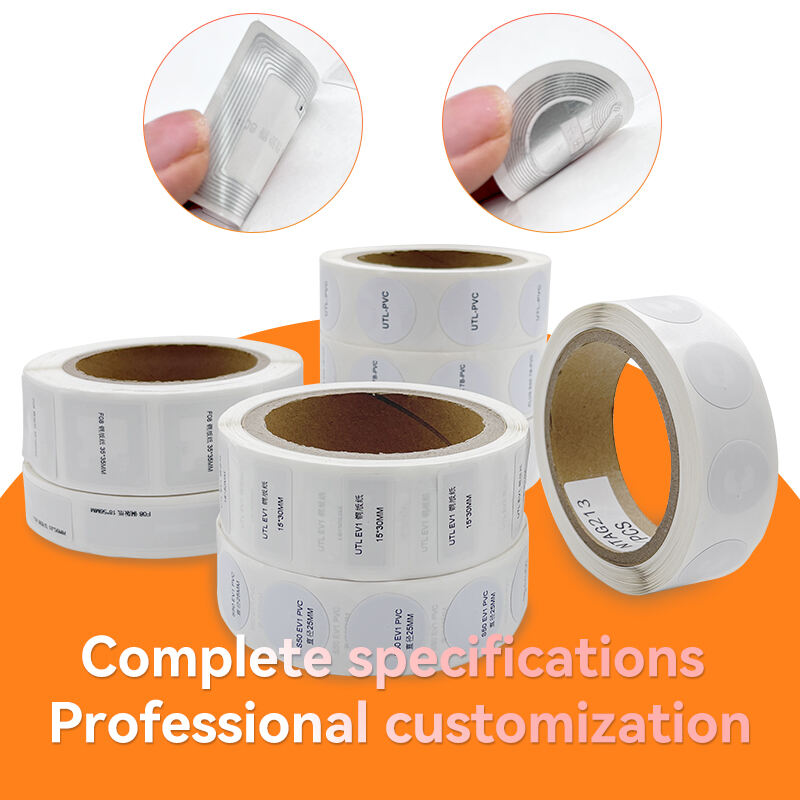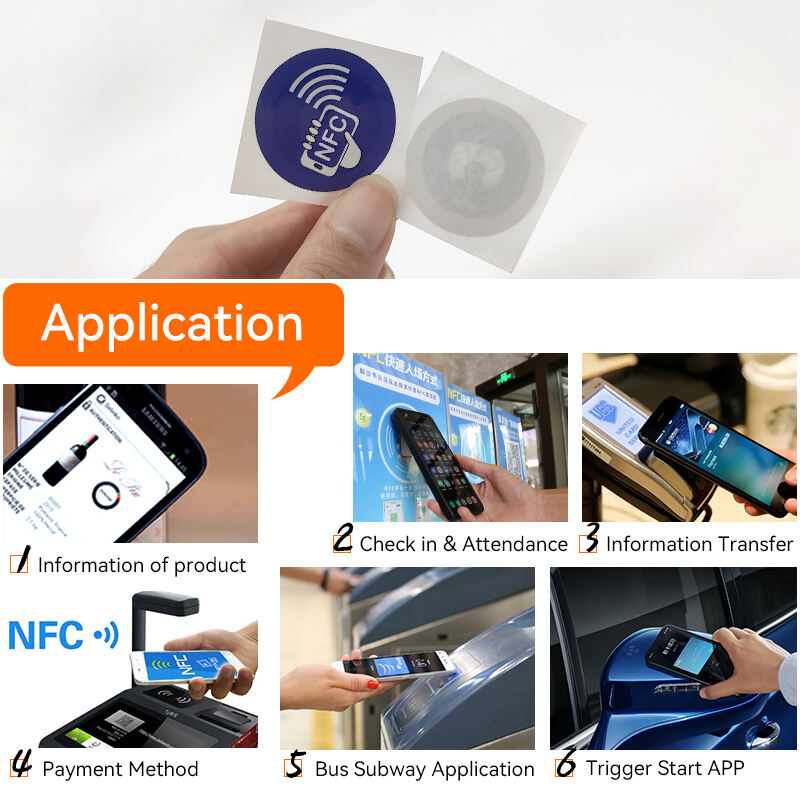RFID (Radio Frequency Identification) is a contactless automatic identification technology that uses radio frequency signals to identify target objects and retrieve associated data without human intervention. This technology excels in harsh environments and can identify moving objects at high speed and read multiple RFID tags simultaneously. Operation is fast, convenient and extremely reliable, making it a cornerstone of modern tracking and identification systems.
Classification Based on Read Range
RFID stickers are categorized according to their read range, which determines their suitability for different applications:
High Frequency (HF) RFID stickers: these stickers operate at 13.56 MHz and offer a read range of up to 1 - 1.5 meters. They are ideal for applications that require a moderate range and precision, such as access control or payment systems.
Ultra-High Frequency (UHF) RFID stickers: The UHF stickers operate between 860 and 960 MHz and offer a read range of up to 10 meters or more, making them perfect for tracking large amounts of data such as logistics and inventory management.
Dual-frequency RFID stickers: By combining HF and UHF capabilities, these stickers offer flexibility for hybrid applications and enable seamless integration across different systems with different range requirements.

Material Selection and Applications
The choice of material for RFID stickers significantly impacts their durability, performance, and application suitability:
Coated Paper: Commonly used for cosmetic labels, pharmaceutical labels, fragile anti-counterfeit labels, and food labels. Its cost-effectiveness and printability make it ideal for short-term or indoor use.
PET (Polyethylene Terephthalate): An eco-friendly material known for its high tensile and tear strength, corrosion resistance, and heat tolerance (up to 150°C). PET’s chemical stability and dimensional consistency suit durable, outdoor labels, such as asset tracking tags in industrial settings.
PVC (Polyvinyl Chloride) : A flexible, stretchable, and shrinkable material, PVC is unsuitable for outdoor use due to its sensitivity to UV light and temperature changes. It is best for soft, flexible labels like event wristbands.
Synthetic Paper: Featuring a soft texture, high tensile strength, water resistance, and tolerance to light, heat, cold, and chemical corrosion, synthetic paper is environmentally friendly and breathable, making it suitable for rugged applications like outdoor signage.
Anti-Metal Materials: These tags use special anti-magnetic, wave-absorbing materials to overcome the challenge of attaching RFID stickers to metal surfaces. Waterproof, acid-resistant, alkali-resistant, and collision-proof, they excel in outdoor settings. When affixed to metal, these tags achieve better read ranges than in air, thanks to advanced circuit designs that mitigate RF interference, showcasing their superior engineering.
Other materials, such as thermal paper, further expand options based on specific needs like thermal printing for receipts or labels.
Applications of RFID Stickers Across Industries
RFID stickers’ versatility shines in diverse tracking and identification scenarios:
Retail Industry - Product Anti-Counterfeiting: RFID stickers embedded in packaging or products verify authenticity, reducing counterfeiting and enabling real-time stock monitoring, as seen in luxury goods markets.
Vehicle Automatic Identification - Parking Management: UHF RFID stickers on vehicle windshields streamline access control in parking lots, reducing wait times and enhancing security.
Aviation Parcel Identification - RFID Luggage Tags: Airports use RFID luggage tags for rapid baggage handling, minimizing lost luggage incidents.
Document Tracking Management - RFID Book Tags: Libraries employ HF RFID stickers to automate book checkouts and inventory, improving efficiency in large collections
Parcel Tracking Identification : UHF stickers track packages across supply chains, providing real-time updates and reducing delivery errors.
Production Line Automation: RFID stickers monitor components on assembly lines, ensuring seamless workflow and quality control in manufacturing.
Material Management: Warehouses use RFID to track raw materials and finished goods, optimizing inventory turnover rates.
Sports Timing: RFID stickers on athletes or equipment provide accurate race timing, as demonstrated in marathons with millisecond precision.

Guangdong Xinye Intelligent Label Co., Ltd.: A Manafacture Leader in RFID Industrial
Guangdong Xinye Intelligent Label Co., Ltd. is a professional manufacturer of HF and UHF RFID stickers. The company offers high-quality and high-performance rfid products that are designed to fit your specific needs. This includes custom antenna designs, size , thickness , frequency and distances. This flexibility ensures that clients across industries receive RFID stickers that are optimized for their specific tracking and identification needs.
RFID stickers made from different materials can be used in a variety of challenging environments and read from different distances. RFID stickers are changing how we track and identify things. They help with security at stores, make logistics more efficient. Companies like Guangdong Xinye are coming up with new ideas, and more and more companies will start using RFID technology. This will create better, more efficient solutions for the future.